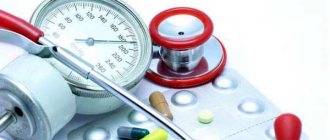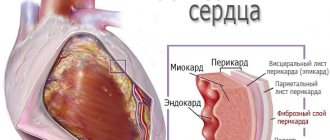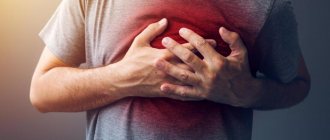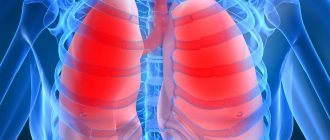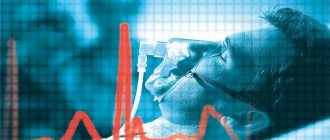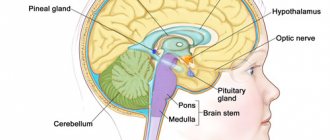Stage 1 hypertension is the initial form of the disease, which is still reversible, and therefore it is important that it is detected promptly and treatment is started as early as possible.
Hypertension affects every third adult, thereby becoming one of the most common pathologies in the world. Arterial hypertension is dangerous due to complications from the most important systems that fail due to constant high pressure. An increase in hydrodynamic pressure in vessels, including in the capillary bed, leads to changes in the walls of blood vessels, and over time, disrupts their ability to fully perform their functions, i.e., supply the body’s tissues with blood.
Early hypertension is often asymptomatic and detected incidentally
Degrees of hypertension and how they differ
The degrees of hypertension differ from each other in the level of pressure increase, as well as clinical manifestations. Blood pressure (BP) with first-degree hypertension exceeds 140 mmHg. Art., reaching 159 systolic pressure and 90–99 mm Hg. Art. diastolic. This reveals the complex nature of the pathology, since the upper, systolic, pressure depends on cardiac output during a strong push produced by the heart muscle. The lower one, diastolic, indicates the condition of the vessels, their peripheral resistance, the condition of the pressure regulation systems - the kidneys and endocrine glands.
The early stage of hypertension often occurs without visible or tangible disturbances; sometimes elevated blood pressure is determined by chance, during an examination for another reason, while the patient does not provide specific complaints about his health condition.
Based on the totality of signs, the following degrees of the disease are determined:
- risk of 1 degree, or high normal blood pressure, which is prehypertension and inevitably develops into a disease in the absence of treatment. This stage already requires constant monitoring of blood pressure, the need for lifestyle changes, and a thorough examination of the cardiovascular system. High normal pressure ranges from 130–139/85–89 mmHg. Art.;
- Stage 1 hypertension – pressure in the range of 140–159 and 90–99 mm Hg. Art. Accordingly, this form is also called light. The development of the disease continues, the pathology requires pressure correction, and there is a risk of hypertensive crises, which can occur suddenly. At this stage, it is possible to determine whether the disease is malignant, that is, whether it is developing rapidly, whether there is a possibility of damage to the internal organs that need the most blood circulation - heart, brain, kidneys, lungs, what is the risk of stage 2, the speed of its onset;
- stage 2 hypertension – the body undergoes pathological changes, especially in the cardiovascular system. 160–179/100–109 mm Hg. Art. – indicators that determine the second degree. This condition leads to changes in target organs. Dilatation of the heart occurs under the constant influence of high pressure. This means that an irreversible process of deterioration of compensation resources in the body has been launched; in the absence of treatment, the risk of grade 3 becomes extremely high.
- stage 3 hypertension – pressure exceeds 180/110 mm Hg. Art., changes in the shock organs become irreversible. The patient is under the constant influence of antihypertensive drugs; with a successful outcome and control of the pressure of the event, signs of heart and kidney failure, however, can persist for the rest of his life. Hypertensive crises are threatening.
- Stage 4 hypertension means that the patient has absolutely no ability to compensate for this critical condition. This is a terminal condition that occurs infrequently. The pressure is about 200/120 mm Hg. Art., but persists for a long time; such prolonged exposure destroys blood vessels.
The arbitration method is daily blood pressure monitoring - the patient wears a mobile tonometer for 24 hours, then, based on the collected data, the degree and type of arterial hypertension is determined.
Depending on the damage to internal organs, the stages of the disease are distinguished: at stage 1 there are no such lesions, at stage 2 hemorrhages, damage, changes in the structure of organs are noticeable, and at stage 3 significant functional impairments are observed. These data do not fully reveal the essence of the disease, but give a general idea of what it is - hypertension, and allow us to develop treatment tactics.
Possible complications
The likelihood of adverse consequences for stage 1 hypertension is minimal (as mentioned, 0.2-5% or slightly higher over a 10-year period).
But there is no need to relax. Without treatment, the disease progresses rapidly, especially in some people.
Therefore, it is quite difficult to detect the line between stages 1 and 2; the moment cannot be tracked without medical intervention.
Among the complications:
- Stroke. Poor blood circulation in the brain. Leads to severe neurological deficit.
- Myocardial infarction. Acute necrosis of muscle structures. Both the first and second are unlikely if you do not exercise and do not overload the body.
- Hemophthalmos. Hemorrhage of the vitreous body of the eye. Much more common. Accompanied by decreased vision, in severe cases (if blood has taken up to 2/3 of the eye) by detachment of the retina. Urgent vitrectomy is indicated.
- Kidney failure. With a long uncontrolled course of the disease.
The most likely scenario before complications develop is the transition of the pathology to stage 2.
Symptoms of stage 1 hypertension
The early stage of hypertension often occurs without visible or tangible disturbances; sometimes elevated blood pressure is determined by chance, during an examination for another reason, while the patient does not provide specific complaints about his health condition. But the disease progresses, and sooner or later it will make itself felt, and then the first signs of the disease appear. These include:
- headache is a painful sensation that occurs suddenly and, most often, is localized in the occipital and temporal parts, as if bursting from the inside. This is a pronounced symptom that appears in almost all patients. The pain is caused by increased pressure in the vessels of the meninges, which are very sensitive and have a large number of nerve endings;
- tinnitus - due to pressure, the speed of blood movement in the vessels of the head and neck increases, so its turbulent movement through the arteries becomes audible through the bones, which is detected by the ear. It may also be a consequence of the effects of hypertension on the central nervous system;
- nosebleeds - small vessels cannot withstand a stable increase in pressure and burst;
- “floaters” before the eyes – various visual impairments are a common disorder with hypertension. Due to pressure, the optic nerve and retina are damaged, and “floaters” are a consequence of these disorders;
- a feeling of constriction in the chest, sometimes chest pain with shortness of breath - classic cardiac symptoms, which do not always appear, but if they do appear, they mean damage to the heart and the manifestation of its functional failure.
- absent-mindedness, weakness, dizziness.
Complications of early stage hypertension appear only when there is no proper treatment and the patient does not adjust his lifestyle.
These signs are not specific, i.e., characteristic only of hypertension, but their appearance serves as a reason to check the body for high blood pressure. The final diagnosis can only be established based on the results of an examination by a specialist.
Headache is the main symptom of hypertension, and at an early stage it is often the only
Symptoms of the disease in the first stage
Stage 1 hypertension represents the initial development of a serious disease. When it appears, the patient feels pressure rises, which appear periodically. After some time, the pressure returns to normal.
When surges occur, a person begins to suffer from a headache, which is localized in the back of the head and temples. Small spots begin to flash before your eyes, there is a noise in your ears, you feel dizzy, and you can feel your heartbeat well.
Important! At the initial stage of development of the disease, a person may not suffer from problems with urination or heart. But over time, the condition worsens, moving into the second stage of the disease.
The most important symptom of stage 1 hypertension is headache. The headache may not be constant. It is often accompanied by dizziness. If you conduct research, then you will find that the pressure has increased significantly.
Symptoms become brighter and more pronounced in the second and third stages of development.
Causes of stage 1 hypertension
Depending on the cause, hypertension is divided into primary, or essential, and secondary, which occurs as a consequence of another, primary disease. Secondary is most often associated with diseases of the heart, kidneys (pyelo-, glomerulonephritis), endocrine system (hypersecretion of thyroxine, adrenaline, aldosterone, vasopressin and other hormones that increase blood pressure). Secondary hypertension is uncommon, accounting for about 3-5%.
Other cases involve dysregulation of the systems that keep blood pressure at optimal levels. The basis of such hypertension is a vicious circle of pathogenesis, in which the main role is played by the release of angiotensin II, which is synthesized from renin secreted by the kidneys. This strong vasoconstrictor triggers a cascade of reactions that support a persistent increase in blood pressure - swelling of the endothelium, release of aldosterone, etc.
The causes of dysregulatory disorders are:
- Stress and emotional overstrain, which lead to excessive load on the nervous system, it is depleted, as a result of which the regulation of some parameters of homeostasis, including blood pressure, suffers. Prolonged stress is accompanied by the release of glucocorticoids, which have a negative effect on blood pressure and wear out compensatory resources.
- Poor nutrition, obesity and cholesterolemia - a large amount of fat and bad cholesterol in free circulation contributes to the occurrence of atherosclerotic changes in blood vessels, the appearance of plaques and the narrowing of their lumen. Blood supply to organs deteriorates, cells die. In addition, increased body weight overloads the heart and the entire circulatory system.
- Sedentary lifestyle - in the absence of regular physical activity, the ability of blood vessels to adapt decreases; the vasomotor center no longer contracts and relaxes smooth muscle elements as effectively, since it also becomes passive. The increased heartbeat is not compensated for, and the pressure rises.
- Heredity is one of the dominant risk factors. Hypertension is associated with a specific set of genes, many of which have already been identified as candidate genes, i.e., capable of causing the disease. If you have a blood relative suffering from hypertension, you should take your blood pressure as seriously as possible and control it.
- Diabetes mellitus is a metabolic disease that disrupts most metabolic processes in the body, affecting pressure maintenance systems and other parameters of homeostasis. About a third of all patients with hypertension have problems with glucose absorption.
- Violation of water-salt metabolism - excessive consumption of salt (namely sodium, which is part of its composition), leads to fluid retention in the body, increasing the volume of circulating blood. To maintain a normal blood pressure level, it is necessary to consume a sufficient amount of fluid, as well as normalize the metabolism of minerals with the help of potassium, a competitor of sodium in physical examination processes.
The upper, systolic, pressure depends on the cardiac output during a strong push produced by the heart muscle. The lower one, diastolic, indicates the condition of the vessels, their peripheral resistance, and the condition of the pressure regulation systems.
Reasons for the development of primary (essential) pathology
Hypertension can be primary or secondary.
Essential hypertension is not caused by any external factors; it is always associated with problems of the heart or blood vessels and is the most difficult from a treatment point of view.
Factors of possible development are as follows:
- Ischemic disease. Associated with insufficient supply of the muscle organ with blood and nutrients. Develops mainly in elderly patients. It doesn’t make itself known until the last minute; the only way to detect the problem in a timely manner is to undergo an electrocardiogram, preferably with stress tests. Noteworthy are shortness of breath at rest, increased heart rate and chest pain for no apparent reason.
- Atherosclerosis of the aorta and its branches. The formation of cholesterol plaques in blood supply structures is the most common pathology. Caused by poor nutrition or lipid metabolism disorders (usually in the system). In such a situation, the pressure is not even the first level. hypertension is consistently high, does not fluctuate, does not depend on time. There are no symptoms, the process can be identified only by passing tests (biochemistry of venous blood, general examination). In case of vascular stenosis, Dopplerography and angiography can be performed to assess the speed of blood flow.
- Congestive heart failure. Associated with low force of blood ejection in systole. It is characterized by constantly elevated blood pressure, tachycardia or bradycardia, muscle weakness and breathing problems (shortness of breath, as they say, “out of the blue”). It has a similar etiology to coronary heart disease. It is observed in 90% of patients who have suffered myocardial damage. This is the leading cause of death and disability in patients following an emergency.
- Heart attack. Can become a trigger for the development of hypertension. The reason is a violation of hemodynamics (blood flow through the vessels).
- Congenital and acquired heart and vascular defects. As a rule, they make themselves known by arrhythmias, shortness of breath, chest pain, and a stable constant increase in blood pressure. In rare cases, the only way to know that a patient was sick is through a pathological examination.
Diagnostics
The examination includes examination and history taking, three-time measurement of blood pressure in both arms. The arbitration method is daily blood pressure monitoring - the patient wears a mobile tonometer for 24 hours, then, based on the collected data, the degree and type of arterial hypertension is determined.
An ECG (electrocardiogram) is performed to determine the condition of the heart and identify possible failure. This study allows you to evaluate the hypertrophy of the heart, their dilatation, conduction and contractility disorders.
An examination of the fundus of the eye is carried out by an ophthalmologist - with increased pressure, the retina suffers, the vessels of the fundus are modified, they form crosshairs and twist strongly, their walls thicken.
Laboratory methods include a general blood and urine test, as well as a biochemical blood test for markers of organ and vascular damage.
Diagnosis of hypertension includes examination of the fundus
Medications
To treat the initial stage of hypertension, if necessary, a cardiologist may prescribe the following medications:
- diuretics: Clopamide, Furasemide;
- beta blockers: Bisoprolol, Anaprilin;
- ACE inhibitors: Captopril, Enap;
- alpha blockers;
- vasodilators;
- calcium antagonists;
- sedatives;
- statins;
- tranquilizers.
Medicines, dosage and course of treatment are prescribed strictly by a doctor, since many drugs have a number of contraindications and side effects that should be taken into account when taking them. There is no treatment for stage 1 hypertension with medications without side effects, but well-chosen medications may not have any effect on the condition of the body. To quickly lower your blood pressure, you can take a tablet of the drug Capoten.
To do this, you need to place it under the tongue and slowly dissolve it for several minutes. Within 20 minutes after taking the medicine, blood pressure readings will drop by 15%. If the pressure is very high, then after half an hour you can take another tablet. Also, many doctors recommend lowering blood pressure with Amlodipine, an effective treatment for hypertension. It is forbidden to select medications on your own, otherwise you can greatly aggravate the condition.
Treatment of stage 1 hypertension
How to treat hypertension in the early stages? First of all, you need to stop self-medicating and consult a specialist. In some cases, you can do without drug therapy; just changing your lifestyle is enough. In others, the doctor will prescribe adequate drugs that will have a pathogenetic effect.
Drug treatment of hypertension is carried out using the following groups of drugs:
- diuretics - reduce blood pressure due to the removal of fluid from the body by increasing diuresis. This effect is achieved by influencing different ions (excretion of sodium with water, retention of potassium). This group includes Hydrochlorothiazide, Furosemide, Manitol, Spironolactone, Lasix;
- beta-blockers - have a complex vasodilator effect and also normalize heart function (Metoprolol, Bisoprolol, Nebivolol, Anaprilin).
- ACE blockers (angiotensin converting enzyme) - are highly effective, acting on the main mechanism of increasing blood pressure (Captopril, Lisinopril, Enap);
- Calcium channel blockers are modern drugs with fewer side effects. These include calcium antagonists (Nifedipine, Amlodipine) and renin antagonists (Rasilez).
Depending on the cause, hypertension is divided into primary, or essential, and secondary, which occurs as a consequence of another, primary disease.
In addition, drugs that affect the central nervous system - sedatives, tranquilizers - have related effects.
You can also use folk remedies as supportive therapy. For example, chokeberry, viburnum, cool mint tea with lemon, apple cider vinegar compresses, and valerian preparations are excellent for reducing blood pressure.
Features of treatment
Treatment for stage 1 hypertension usually does not involve taking medications. Very often it is possible to normalize blood pressure by adjusting your diet, giving up bad habits, and reviewing your lifestyle. They can be supplemented with massages, therapeutic exercises, meditation, and breathing exercises. If the above methods do not bring results, the patient is prescribed antihypertensive drugs.
Conservative therapy
It will be necessary to eliminate the maximum number of risk factors. Many of them are related to nutrition or lifestyle, so it is possible to do this. The following will help reduce blood pressure:
- To give up smoking. Components of tobacco smoke damage blood vessels, making their walls more rigid. The heart rate accelerates, the lumen of the arteries decreases. All of these factors contribute to the development of hypertension;
- Normalization of weight. According to statistics, every kilogram that goes away takes with it 2 mmHg. Art. pressure. For example, if you lose 5 kg, your blood pressure will drop by as much as 10 units;
- Minimizing stress. During excitement, the arteries reflexively contract, which is always accompanied by an increase in blood pressure. If your life is full of experiences, this condition becomes permanent. An established work and rest schedule, a philosophical attitude towards minor troubles, work with a psychologist, meditation, art therapy are several effective ways to help manage stress;
- Physical activity. Serious sports activities with stage 1 hypertension are contraindicated. However, physical activity, especially therapeutic exercises, are considered an excellent way to reduce blood pressure.
Meals are fractional, in small portions, 6 times a day. It is advisable to eat all products fresh, boiled, stewed or steamed.
The diet for hypertension should contain a minimum of salt. Its amount should not exceed 3-5 g/day. Be sure to take into account the seasoning content in finished products when calculating. For example, a sandwich with sausage and black bread may well contain 2-3 g of salt.
It is also necessary to limit the consumption of fatty animal products: red meat, butter, eggs, fatty cheeses, cottage cheese. They all contain high amounts of saturated fat, which increases bad cholesterol. And a high concentration of sterol is one of the risk factors.
Products that are best excluded from the diet for stage 1 hypertension:
- coffee, cola, strong tea;
- smoked meats, pickles;
- alcohol;
- sweets;
- pickled or canned foods;
- hot seasonings, spices.
It is useful to include in your diet:
- vegetables;
- greenery;
- berries;
- fruits;
- porridge;
- garlic;
- vegetable oil;
- low-fat dairy products;
- soups.
Liquid consumption (including herbs, decoctions) is limited to 0.8-1 l/day. Reducing water consumption prevents water from accumulating in tissues.
Medications
Antihypertensive drugs are one of the most extensive groups of drugs that require an individual approach. When choosing medications, the doctor takes into account the characteristics of hypertension, the presence of chronic diseases, risk factors, past pathologies, and age. The selection of blood pressure pills is complicated by the need to prescribe several drugs at once, which enhance each other’s effect.
The most common medications that lower blood pressure belong to the following pharmacological groups:
- Calcium antagonists - calcium channel blockers prevent the entry of ions of the mineral of the same name into cells. Calcium is necessary for muscle cells to contract. Reducing the supply of the mineral helps relax blood vessels. The main representatives: amlodipine, verapamil, diltiazem, nifedipine.
- Beta-blockers - block the receptors of the same name, which are responsible for the transmission of nerve impulses. Helps relax arterial walls. The main representatives: atenolol, bisoprolol, metoprolol, propranolol.
- Angiotensin-converting enzyme (and ACE) inhibitors are a group of drugs that reduce the production of angiotensin. This hormone causes blood vessels to constrict, causing blood pressure to rise. The main representatives are captopril, lisinopril, fosinopril, enalapril;
- Angiotensin II receptor inhibitors – prevent entry into the cell. The effect of taking them is similar to drugs of the ACE inhibitor group. The main representatives: irbesartan, candesartan, losartan, telmisartan, valsartan.
- Diuretics (diuretics) – remove sodium salts and water from the body, which helps lower blood pressure. Usually prescribed as an addition to other antihypertensive medications. The main representatives: hydrochlorothiazide, indapamide, spironolactone, furosemide.
Usually treatment is started with small doses, gradually increasing the dosage if necessary. All drugs for lowering blood pressure are divided into two groups: the first act within 15-30 minutes, the second must be taken for several weeks to achieve the desired effect. Fast-acting medications are used primarily when it is necessary to quickly normalize blood pressure, and long-acting medications are used for long-term treatment.
Folk remedies
Early-stage hypertension can be treated well with traditional methods, if you follow other doctor’s recommendations.
- Red rowan. Has a powerful hypotensive effect. Squeeze the juice out of the berries. Take 20 ml of juice 3 times a day half an hour before meals. The duration of treatment is 21 days.
- Periwinkle. The leaves of the plant are used in traditional medicine as a sedative, vasodilator, and heart rate reducer. To prepare the infusion, pour 7 g of leaves with a glass of boiling water and let stand for 5 minutes. Strain, drink 100 ml 3 times a day.
- Carrot. Carrot juice has a tonic, vasodilating effect. More effective when combined with honey. Mix 100 ml of carrot juice, 50 g of honey, a glass of warm water. Drink 100 ml 3 times a day an hour before meals. The course of treatment is 21 days.
- Amosov's mixture. They say that this recipe was invented by the famous heart surgeon Nikolai Amosov. It contains the optimal ratio of foods rich in minerals necessary for normal heart function. To prepare this mixture, grind in a meat grinder or blender 200 g of walnut kernels, 250 g of raisins, 250 g of dried apricots, 250 g of dried prunes, 250 g of figs, lemon. Add 250 g of honey. Stir. Place in the refrigerator for a day. Eat a tablespoon 2 times/day.
- Barberry. The berries, leaves, and roots of the plant have a calming, antispasmodic effect. To prepare the decoction, pour 2 tbsp. l. dried leaves, roots, berries of barberry 600 ml of boiling water. Let stand overnight. Drink 200 ml of decoction 20-40 minutes before meals 3 times a day.
Consequences
Complications of early stage hypertension appear only when there is no proper treatment and the patient does not adjust his lifestyle. However, this does not happen so rarely.
First of all, the heart suffers. The patient feels irregular contractions, strong tremors in the chest, sometimes chest pain and shortness of breath. The feeling of temporary cardiac arrest and compression accompanies the increase in heart failure due to overload of the heart with blood pressure.
Headaches can develop into transient ischemic attacks (what is popularly called a microstroke), and then into a full-fledged cerebrovascular accident. This is fraught with paresis and paralysis, loss of performance. Pathologies of the vascular bed are observed - the development of aneurysms of large vessels.
The question often arises whether it is possible to be drafted into the army with first-degree hypertension. During the medical commission, the fitness category is determined, which will be indicated on the military ID. A comprehensive examination includes measuring blood pressure, so if at the time of the examination the pressure is elevated, the conscript may be declared unfit for military service, although in practice this is rare. Risk of degree 2 or higher, documented, is a reason for exemption from military service.
With increased pressure, the retina suffers, the vessels of the fundus of the eye change, they form crosshairs and twist strongly, their walls thicken.
Disability is given starting from the 2nd degree, but sometimes it can be obtained from the first if the hypertension is malignant and damage to the shock organs progresses, there are obvious functional impairments, and the patient needs care.
Symptoms of mild hypertension
Depending on the degree of development of complications, damage to various body systems, stage 1 hypertension is characterized by the following symptoms:
- Headaches in the occipital and parietal region. The pain increases with such force that it is difficult for a person to open or close his eyes.
- Flashing before my eyes. Occurs due to a sharp increase in vascular blood volume.
- Decreased performance, general weakness of the body.
- Sleep disturbance.
- Nervous tension.
- Ringing in the ears.
- Consistently high heart rate.
- Left-sided pain in the chest area, radiating to the arm or scapula area.
Important! Often stage 1 hypertension is not recognized in time. The patient comes in at more severe stages, which complicates treatment.
These symptoms are easily confused with ordinary fatigue after physical activity. And sometimes, on the contrary, the patient blames the manifestation of symptoms on simple fatigue, without taking appropriate measures, and starts the disease.
See also: Stage 2 hypertension
Mechanism of disease development
In the body of a healthy person, blood pressure in the vessels and their narrowing are regulated by hormonal levels. When the structure of cell membranes changes, electrolyte metabolism in cells is disrupted. Because of this, hormonal levels change. The amount of substances in the body that constrict blood vessels and cause spasms increases. Consequences:
- Increased heart rate.
- Increasing the volume of fluid in the body.
- Insufficient nutrients and oxygen.
Traditional methods
Many people doubt whether stage 1 hypertension can be cured. Folk remedies cope with the task no worse than medicines. In the early stages, the disease can be cured without the use of drugs.
Folk remedies for hypertension are listed in the table.
| Name | Cooking method |
| Infusion with onion and honey | Take 1 kg of onions and squeeze the juice out of it. Mix in equal quantities with honey and leave for 24 hours. Take the resulting mixture 1 tbsp. from morning until breakfast. With daily use, you can normalize blood pressure |
| Salad | Take 3 walnuts, 2 cloves of garlic, 1 carrot. Chop and mix everything, you can add corn or vegetable oil. Thanks to the composition, the body is saturated with essential vitamins and minerals. |
| Bath with valerian | Prepare a decoction of valerian root: take 0.5 plants and 2 liters of liquid. The mixture is infused for half an hour. Next, you need to pour the resulting solution into the bath. The procedure should take no more than 30 minutes. This bath should be used every other day for a month. |
| Infusion of lemon, garlic and honey | Grind 5 lemons through a meat grinder. Add 2 heads of garlic and 1 liter of honey. Leave for 3 days in refrigerated conditions. Take in the amount of 1 tbsp. since morning. Use until the mixture is used up. Then take a break for 30 days |
Preventive actions
The best option for preventing hypertension is considered to be a healthy lifestyle (balanced diet, absence of bad habits, proper rest). Physical activity plays an important role in the prevention of this disease, because physical inactivity often leads to its development. The optimal sports are cycling, walking, swimming.
If it is difficult to immediately switch to intense exercise, you can start with short walks. Initially, you can refuse public and personal transport and walk to work.
It is important to periodically undergo examination of the whole body, take blood tests for sugar and cholesterol, and monitor the functioning of the heart. Such preventive measures make it possible to identify the disease at an early stage and prevent its further progression.
Stage 1 hypertension (symptoms and treatment are described in this article) occurs in people of all ages and social classes. The danger of this disease lies in the fact that it often occurs in a latent form, that is, asymptomatic. Patients seek medical help only when serious complications occur. If treatment is started promptly, the prognosis is favorable in most cases.
Proper nutrition
If a patient is diagnosed with stage 1 hypertension, treatment involves following the rules of a balanced diet. Namely:
- Eat 5-6 times a day in small portions (200 g) with breaks of 3-4 hours. The last meal should be 2-3 hours before bedtime.
- Reduce the amount of salt - the product retains fluid and affects kidney function.
- Avoid products containing animal fats.
- Sweet, flour, smoked, fatty, fried foods are prohibited.
- Reduce consumption of coffee drinks.
- Add vegetables and fruits.
- Eat lean meat and fish, dairy products.
- It is better to steam, oven or boil food.
- Don't forget about liquid. You need to drink at least 1 liter of pure still water per day.
How to treat hypertension?
The main goal of treating hypertension is to reduce the risk of heart complications. A slight increase in blood pressure and the possibility of its spontaneous decrease in the initial stages of the disease indicate the reversibility of organic and functional complications. Therefore, when identifying a disease, doctors first recommend non-drug therapy.
First of all, doctors advise giving up all bad habits (alcohol, smoking). The penetration of nicotine into the body reduces the lumen of blood vessels, which leads to increased blood pressure and the formation of blood clots. Nicotine addiction is the main reason why grade 1 hypertension occurs.
Symptoms and treatment of the disease is a rather complex issue, the solution of which cannot be imagined without reducing body weight. Obesity among the fair sex is considered a leading risk factor for the disease. Proper and balanced nutrition will allow you to forget about this problem forever.
Another important step on the path to recovery is reducing the amount of stress in everyday life. It is certainly not possible to completely avoid experiences. However, doctors advise relaxing more often and learning to control your life. Meditation and yoga sessions and various trainings are excellent for these purposes.
If the above recommendations do not help, you have to resort to drug treatment. It can be combined with non-traditional methods of therapy (massage, medicinal herbs).
When should you see a doctor?
Stage 1 hypertension, the symptoms of which are listed above, should not be ignored. When the first signs of the disease appear, you must seek qualified help.
All patients who are at increased risk of developing this disease should undergo a complete diagnostic examination annually. Only in this way can the disease be identified at the initial stage and the necessary measures taken to eliminate it.
To identify signs of hypertension, doctors use the following instrumental examination methods: blood pressure measurement, echocardiography, ultrasound of the kidneys and heart, MRI of the brain, blood tests. If these tests are sufficient to confirm the primary diagnosis and determine its extent, at this stage the examination of the patient is completed and appropriate therapy is prescribed.
Neglect of health sometimes ends badly for patients who have been diagnosed with stage 1 hypertension. Disability and problems with the functioning of the cardiac system are just some of the complications that this disease can subsequently lead to.
